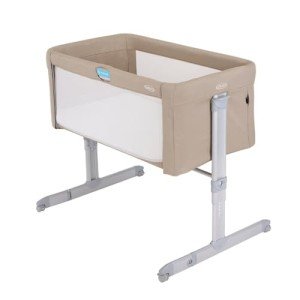The Most Valuable Advice You Can Receive About Bedside Cot For First-Time Parents
Choosing the Right Bedside Cot for First-Time Parents
The shift to becoming a parent is filled with happiness, excitement, and a myriad of responsibilities. For first-time parents, among the considerable decisions they face is selecting the ideal sleeping plan for their newborn. One popular alternative getting traction is the bedside cot, also known as a co-sleeper. This short article will check out the numerous elements of bedside cots, providing a detailed guide for first-time parents to help them make informed options.
What is a Bedside Cot?
A bedside cot is a specially designed crib that attaches to the side of the parental bed, permitting parents to keep their newborn close during the night while ensuring the baby has their own safe sleeping space. This set-up promotes much easier breastfeeding, soothing, and tracking of the baby without the dangers associated with sharing a bed.
Advantages of a Bedside Cot
- Security: Bedside cots are developed to provide a safe and secure sleeping location for the baby, lowering the dangers connected with bed-sharing.
- Convenience: Parents can quickly access their baby without requiring to rise, making nighttime feedings and diaper modifications simpler.
- Bonding: Having the baby nearby encourages bonding and peace of mind, reducing adult stress and anxiety.
- Sleep Quality: With a bedside cot, parents can sleep more soundly understanding their baby neighbors while still having their own space.
Types of Bedside Cots
When choosing a bedside cot, first-time parents will experience numerous styles and features. Here are the main types:
Type
Description
Functions
Conventional Co-Sleeper
A crib that attaches securely to the bed, enabling parents to reach the baby easily.
Adjustable height, detachable side panel
Mini Cot
Smaller sized than a basic crib, great for space-saving in small rooms.
Light-weight, portable, often features wheels
Convertible Cot
A versatile option that converts from a bedside cot to a standalone crib.
Long-lasting, can adjust as the baby grows
Load 'n Play
A portable play yard that can be used as a bedside cot for travel.
Versatile, folds quickly, includes changing table
Key Features to Consider
Picking the best bedside cot includes more than simply picking a design. Parents must consider the following features:
- Safety Standards: Ensure the cot satisfies safety guidelines to safeguard the baby.
- Height Adjustability: A cot that can get used to the height of the parents' bed provides better access and comfort.
- Relieve of Assembly: Many cots are designed for fast, easy assembly and disassembly, which is advantageous for hectic new parents.
- Portability: Lightweight and portable alternatives are ideal for households who travel frequently.
- Bed mattress Quality: A company, breathable mattress is important for the baby's safety and convenience.
- Storage Capabilities: Some cots come equipped with shelves or storage compartments for baby essentials, which can help keep things organized.
Tips for Safe Sleeping Practices
Even with the safest bedding arrangements, parents need to constantly follow safe sleeping practices to protect their newborns. The following guidelines should be stuck to:
- Place the baby on their back: Always lay the baby down to sleep on their back to decrease the risk of Sudden Infant Death Syndrome (SIDS).
- Use a company mattress: Ensure the bed mattress fits snugly in the cot with no sagging or gaps.
- Avoid soft bedding: Keep pillows, blankets, and packed animals out of the baby's sleeping area.
- Screen the baby's temperature: Overheating can be a danger factor for SIDS; dress the baby properly for the weather.
Regularly Asked Questions (FAQs)
1. Are bedside cots safe for newborns?
Yes, when following the producer's guidelines and adhering to safe sleeping practices, bedside cots can be a safe sleeping option for newborns.
2. Can a bedside cot be used for co-sleeping?
Yes, a bedside cot allows for closeness in between parents and the baby without the threats associated with bed-sharing. It offers a different sleeping location while being easily available.
3. For how long can a baby use a bedside cot?
This normally depends on the size of the cot and the baby's development. A lot of bedside cots can be utilized up until the baby reaches around 6 to 12 months or is able to climb out.
4. Do I require to buy special bed linen for a bedside cot?
A lot of bedside cots use standard crib bed linen, but it's important to examine the producer's recommendations for sizes and kinds of bedding suitable for the specific cot.
5. Can bedside cots be used for travel?
Yes, many bedside cots are designed with mobility in mind. Bedside Cot For Close Bonding can quickly fold and include bring cases for convenient travel.
For first-time parents, the option of sleeping arrangements for a newborn can be intimidating. Bedside cots offer a great compromise in between nearness and security, encouraging bonding while making sure the baby has a safe space to sleep. By exploring the types, functions, and security standards, new parents can make educated decisions that finest fit their family's requirements. With the right bedside cot, parents can delight in peaceful nights and confident care for their newborn.
